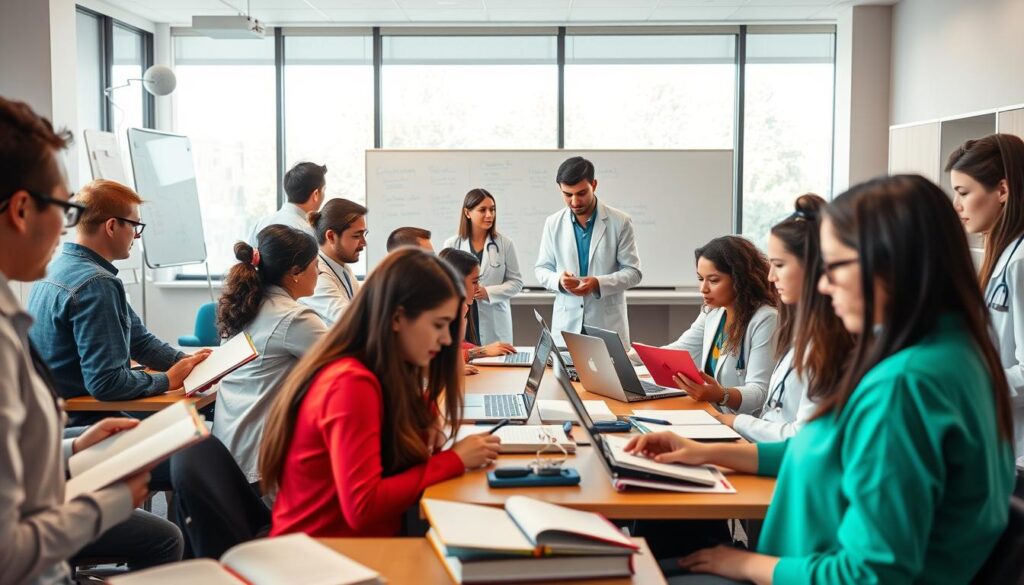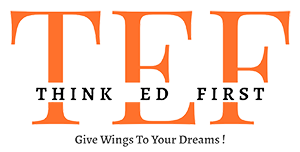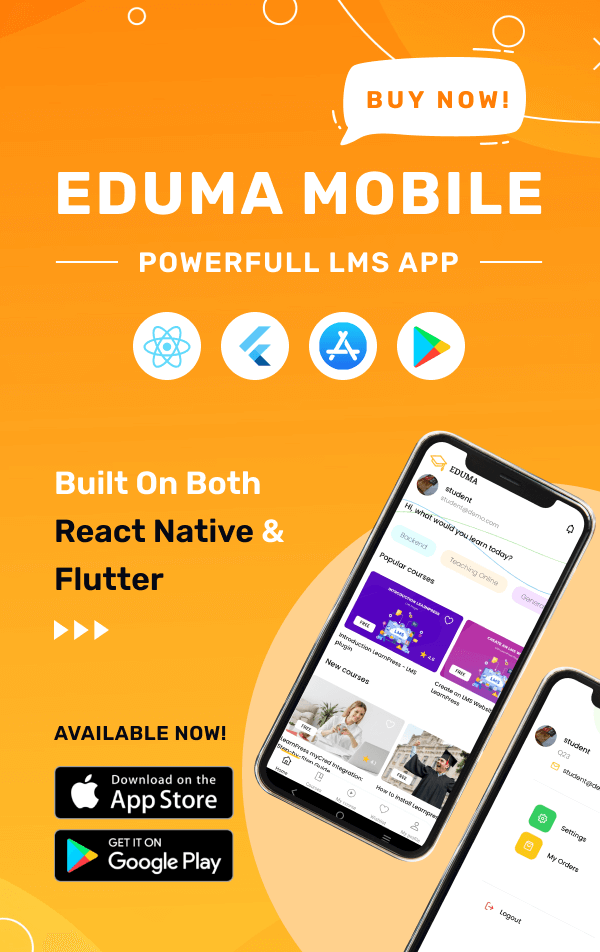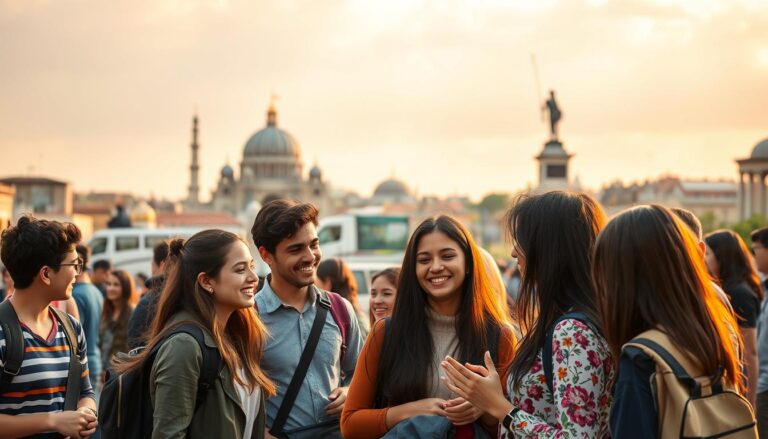Many aspiring doctors dream of studying medicine, but the high costs often seem like a barrier. What if there was a way to achieve this dream without breaking the bank? Could studying abroad be the solution?
We explore the possibility of obtaining a medical degree at a fraction of the cost. With tuition fees starting as low as INR 2.5 lakhs per year, it’s worth considering. The quality of education, modern infrastructure, and globally recognized degrees make it an attractive option.
Russian medical universities are approved by WHO and NMC, ensuring the validity of the degree in India. With over 20,000 Indian students already enrolled, it’s clear that this path is gaining popularity. The student-teacher ratio of 7:1 ensures personalized attention, which is often lacking in Indian institutions.
For those seeking more information, studying MBBS in Russia offers a detailed guide. The affordability, combined with high-quality education, makes it a viable option for many. Let’s dive deeper to understand if this opportunity is right for you.
Introduction to Affordable Medical Education in Russia
Pursuing a medical degree has always been a dream for many, but financial constraints often make it seem out of reach. However, studying abroad can offer a viable solution. One such destination that has gained popularity among Indian students is Russia. With moderate fees and globally recognized degrees, it’s becoming a preferred choice.
Current Trends for Indian Students
In recent years, there has been a significant increase in the number of Indian students opting for medical education in Russia. Over 20,000 students are already enrolled, and the numbers continue to grow. The affordability of tuition fees, combined with the quality of education, makes it an attractive option.
Russian medical universities offer programs in English, which eliminates the language barrier for international students. The curriculum is robust, ensuring students receive comprehensive training. Additionally, the student-teacher ratio of 7:1 allows for personalized attention, which is often lacking in Indian institutions.
Why Russia is an Attractive Destination
Russia stands out as a destination for medical education due to its affordability and quality. The total cost for a six-year program is approximately ₹25 lakhs, including tuition and living expenses. This is significantly lower compared to private medical colleges in India.
Moreover, Russian degrees are recognized by the World Health Organization (WHO) and the National Medical Commission (NMC). This ensures that graduates can practice in India or pursue further studies globally. The cultural diversity and support systems for international students further enhance the appeal.
| Aspect | Russia | India (Private Colleges) |
|---|---|---|
| Tuition Fees (Annual) | ₹2.4 – ₹5.1 lakhs | ₹28 lakhs |
| Total Cost (6 Years) | ₹25 lakhs | ₹1.68 crores |
| Student-Teacher Ratio | 7:1 | 20:1 |
Understanding the MBBS Admission Process in Russia
The journey to becoming a doctor starts with understanding the admission process. For Indian students, securing a seat in a medical university abroad involves meeting specific criteria and preparing the necessary documents. Let’s break down the steps to make this process clear and manageable.
Eligibility Criteria and NEET Requirements
To apply for medical programs, students must meet certain eligibility criteria. A minimum of 50% marks in Physics, Chemistry, and Biology (PCB) in 12th grade is required. Additionally, qualifying the NEET exam is mandatory for Indian students. The NEET score ensures that candidates meet the standards set by the National Medical Commission (NMC).
Age is another factor to consider. Applicants must be at least 17 years old by December 31 of the admission year. While there’s no upper age limit, most universities prefer candidates under 25. Meeting these criteria is the first step toward a successful application.
Documentation and Application Steps
The application process is straightforward but requires attention to detail. Here’s a list of essential documents:
- Academic mark sheets (10th and 12th grade)
- NEET scorecard
- Passport copy
- Medical fitness certificate
Once the documents are ready, students can apply directly to their chosen university. The application timeline typically runs from May to September. Admissions are granted on a first-come, first-served basis, so early submission is advisable.
For those exploring alternatives, MBBS without NEET is another option worth considering. However, for most students, qualifying NEET and following the standard admission process remains the preferred path.
MBBS in Russia under 10 Lakhs
Achieving a medical degree without financial strain is a growing possibility for many. The cost of studying medicine abroad has become increasingly manageable, especially in countries offering competitive fee structures. For Indian students, this opens doors to high-quality education without the burden of excessive expenses.
Data from several institutions shows that tuition fees can be very competitive. Some universities offer integrated packages that include tuition, hostel, and additional expenses, making the total cost fall under 10 lakhs per year. This affordability is further enhanced by government subsidies, which reduce the financial burden on students.
| University | Annual Tuition Fee (INR) | Hostel Fee (INR) | Total Annual Cost (INR) |
|---|---|---|---|
| Kabardino Balkarian State University | 2.4 lakhs | 0.5 lakhs | 2.9 lakhs |
| Chuvash State Medical University | 2.5 lakhs | 0.7 lakhs | 3.2 lakhs |
| Crimea Federal University | 3.0 lakhs | 0.6 lakhs | 3.6 lakhs |
These figures highlight the financial advantages of pursuing medical education abroad. With careful planning, students can complete their studies without exceeding their budget. In later sections, we’ll compare these fee structures to help you make an informed decision.
Comparing MBBS in Russia and MBBS in India
Choosing the right destination for medical studies can shape your entire career. For Indian students, the decision often comes down to balancing cost and quality. Let’s explore how Russian and Indian programs compare in terms of fees, class sizes, and educational standards.
Tuition Fee Differences
One of the most significant factors is the cost of education. In India, private medical colleges charge exorbitant fees, often exceeding ₹1 crore for the entire program. Public colleges are more affordable but have limited seats, making admission highly competitive.
In contrast, Russian universities offer programs at a fraction of the cost. The annual tuition fee ranges from ₹2.5 to ₹5 lakhs, with the total cost for six years staying under ₹25 lakhs. This affordability makes it a viable option for many students.
Class Size and Quality of Education
Class sizes and teacher-student ratios play a crucial role in the learning experience. In India, private colleges often have large batches, with a student-teacher ratio of 20:1 or higher. This can limit personalized attention and hinder effective learning.
Russian universities, however, maintain smaller class sizes with a ratio of 7:1. This ensures that students receive individualized guidance and support. Additionally, the curriculum is designed to provide comprehensive theoretical knowledge and extensive clinical exposure.
| Aspect | Russia | India (Private Colleges) |
|---|---|---|
| Annual Tuition Fee | ₹2.5 – ₹5 lakhs | ₹20 – ₹30 lakhs |
| Total Cost (6 Years) | ₹15 – ₹25 lakhs | ₹1.2 – ₹1.8 crores |
| Student-Teacher Ratio | 7:1 | 20:1 |
These comparisons highlight the advantages of studying abroad. With affordable fees, smaller class sizes, and modern facilities, Russian universities offer a compelling alternative to the high costs and challenges of Indian programs.
An Overview of Russian Medical Universities
Russian medical universities have become a beacon of hope for students seeking quality education at affordable costs. These institutions are globally recognized for their high standards and modern facilities. Many of them are approved by the National Medical Commission (NMC) and the World Health Organization (WHO), ensuring their degrees are valid worldwide.
NMC and WHO Approved Institutions
When choosing a medical university, accreditation is crucial. Institutions like Pavlov University, Sechenov University, and Kazan State Medical University are approved by both NMC and WHO. This ensures that graduates can practice medicine in India or pursue further studies globally.
These universities meet stringent quality standards, offering robust curricula and extensive clinical training. The recognition by global bodies adds credibility to their degrees, making them a preferred choice for international students.
Top-Rated Universities for Indian Students
Several Russian medical universities are particularly popular among Indian students. Here are some of the top-rated institutions:
- Pavlov University: Known for its advanced research facilities and experienced faculty.
- Sechenov University: Offers a comprehensive curriculum with a focus on practical training.
- Kazan State Medical University: Renowned for its modern infrastructure and international collaborations.
These universities not only provide quality education but also offer a supportive environment for international students. With smaller class sizes and personalized attention, they ensure a fulfilling learning experience.
Course Duration and Curriculum Structure
Understanding the structure of a medical program is essential for aspiring doctors. The program spans six years, carefully balancing theoretical learning with practical training. This ensures students gain the knowledge and skills needed to excel in their careers.
The first three years focus on pre-clinical studies. Students learn foundational subjects like anatomy, physiology, and biochemistry. These years build a strong theoretical base, preparing them for the next phase of their education.
The final three years emphasize clinical training. During this period, students work in hospitals and clinics, applying their knowledge in real-world settings. This hands-on experience is crucial for developing practical skills and confidence.
Theoretical Studies vs. Clinical Training
The program is designed to provide a balance between theory and practice. Early years focus on classroom learning, while later years prioritize clinical rotations. This approach ensures students are well-rounded and ready for professional challenges.
The curriculum aligns with international standards, making the degree globally recognized. Semesters are structured to include both academic study and internships. This ensures students gain comprehensive training throughout the program.
Clinical internships are a key component of the final year. Students work under supervision, gaining experience in various medical fields. This prepares them for licensing exams and future practice.
Cost Breakdown: Tuition, Hostel, and Living Expenses
Breaking down the costs of medical education can help students plan their finances effectively. Understanding tuition, hostel fees, and living expenses is essential for making informed decisions. This section provides a detailed analysis to guide aspiring doctors.
Detailed Analysis of Fees and Expenses
Tuition fees vary across institutions, but they remain affordable compared to Western countries. On average, annual tuition ranges from ₹2.5 to ₹5 lakhs. Hostel fees are additional, typically costing between ₹0.5 to ₹1 lakh per year.
Living expenses, including food and transportation, are another factor to consider. Monthly costs can range from ₹12,000 to ₹15,000, depending on the city. Budgeting wisely can help students manage these expenses effectively.
| University | Annual Tuition Fee (INR) | Hostel Fee (INR) | Total Annual Cost (INR) |
|---|---|---|---|
| Bashkir Medical University | ₹5,04,000 | ₹14,000 | ₹5,18,000 |
| Orel State University | ₹3,15,000 | ₹12,000 | ₹3,27,000 |
| Altai State Medical University | ₹3,40,000 | ₹15,000 | ₹3,55,000 |
Expenses vary across cities, with larger cities like Moscow being more expensive. Smaller cities offer lower living costs, making them ideal for students on a budget. Planning ahead can ensure a smooth financial journey.
For 2025, estimates suggest that costs will remain stable, with minor adjustments for inflation. Students should account for these changes when planning their finances. Scholarships and part-time work opportunities can also help reduce the financial burden.
By understanding the cost breakdown, students can make informed decisions and focus on their studies without financial stress. Proper planning ensures a fulfilling educational experience abroad.
Medium of Instruction and Language Support
Language plays a crucial role in shaping the educational experience for international students. For those pursuing medical studies abroad, understanding the medium of instruction is essential. Most programs for foreign students are taught in English, ensuring accessibility and ease of learning.
Top universities offer comprehensive English-medium curricula. This eliminates the language barrier, allowing students to focus on their studies without additional stress. The use of English as the primary medium ensures that international students can grasp complex medical concepts effectively.

In addition to English, universities provide supplementary Russian language courses. These programs are designed to assist students during clinical placements. Learning basic Russian helps in communicating with patients and understanding medical terminology in local contexts.
Here’s a comparison of universities offering English-medium programs with additional Russian language support:
| University | English-Medium Program | Russian Language Support |
|---|---|---|
| Pavlov University | Yes | Yes |
| Sechenov University | Yes | Yes |
| Kazan State Medical University | Yes | Yes |
The benefits of English-medium education are significant. It ensures that students from diverse backgrounds can learn together in a common language. This fosters a collaborative and inclusive learning environment.
Language training also plays a vital role in clinical settings. Students who learn basic Russian find it easier to interact with patients and healthcare professionals. This practical skill enhances their overall learning experience and prepares them for real-world challenges.
Many Indian students have shared positive experiences about the language support provided. It has eased their transition into a new educational system and culture. With the right guidance, they can focus on their studies and achieve their career goals.
Benefits for Indian Students Studying in Russia
For Indian students, studying medicine overseas provides access to world-class facilities and training. Russian universities offer a welcoming environment that fosters both academic and personal growth. The multicultural campuses and robust support systems make it an ideal choice for international students.
Cultural Diversity and Support Systems
Russian universities are known for their diverse student communities. This multicultural environment allows Indian students to interact with peers from various backgrounds. Such exposure enhances their understanding of global healthcare practices and broadens their perspectives.
Support systems in these institutions are comprehensive. Mentorship programs, student networks, and dedicated international offices ensure that students feel at home. These resources help them navigate academic challenges and adapt to a new culture seamlessly.
Exposure to Global Healthcare Practices
Studying in Russia provides Indian students with unique opportunities to learn about different healthcare systems. Clinical training in modern hospitals and clinics exposes them to advanced medical technologies and practices. This hands-on experience is invaluable for their future careers.
Additionally, the curriculum is designed to meet international standards. This ensures that graduates are well-prepared to work in diverse healthcare settings worldwide.
Personal Growth and Adaptability
Living and studying in a foreign country fosters personal growth. Indian students develop adaptability, resilience, and problem-solving skills. These qualities are essential for thriving in the ever-evolving field of medicine.
Cross-cultural experiences also enhance communication skills. Students learn to interact effectively with people from different backgrounds, a crucial skill for healthcare professionals.
Success Stories of Indian Students
Over 20,000 Indian students are currently pursuing medical education in Russia. Many have shared positive experiences about their academic journey and career prospects. Their success stories highlight the benefits of choosing Russian universities for medical studies.
For instance, graduates from institutions like Pavlov University and Kazan State Medical University have excelled in their careers. They attribute their success to the quality of education and the supportive environment provided by these universities.
In conclusion, studying in Russia offers Indian students a unique blend of academic excellence, cultural diversity, and personal growth. These benefits make it a compelling choice for those seeking a global medical education.
State and Federal Medical Universities: What to Know
Understanding the differences between state and federal medical universities can help students make informed decisions. Both types of institutions offer quality education, but they vary in terms of infrastructure, reputation, and accreditation standards.
State medical universities are funded and managed by regional governments. They often have a strong focus on local healthcare needs and provide affordable education. Federal universities, on the other hand, are supported by the national government and typically offer more advanced facilities and resources.
When comparing infrastructure, federal universities often stand out with modern labs, research centers, and libraries. State universities, while more modest, still provide essential facilities for effective learning. Both types are approved by national bodies like the NMC and WHO, ensuring their degrees are globally recognized.
Here are some well-known state medical institutions favored by Indian applicants:
- Pavlov University: Known for its advanced research and experienced faculty.
- Kazan State Medical University: Offers a robust curriculum and international collaborations.
- Sechenov University: Focuses on practical training and clinical exposure.
Choosing between state and federal universities depends on individual preferences and goals. State institutions are ideal for those seeking affordability, while federal universities offer cutting-edge resources. For students exploring other options, studying MBBS in Uzbekistan is another excellent choice.
By evaluating these factors, students can select the institution that best aligns with their aspirations and budget. Both state and federal universities in Russia provide pathways to a successful medical career.
How to Prepare Academically and Logistically
Preparing for medical studies abroad requires careful planning and organization. From gathering essential documents to meeting deadlines, every step plays a crucial role in ensuring a smooth admission process. Here’s a detailed guide to help you navigate this journey effectively.
Document Preparation and Application Tips
Start by compiling all necessary academic documents. These include your 10th and 12th-grade mark sheets, NEET scorecard, and a valid passport. Ensure these documents are up-to-date and error-free to avoid delays in processing.
Organizing your application materials is equally important. Create a checklist to track the required documents and submission deadlines. This will help you stay on top of the process and ensure nothing is overlooked.
- Submit your application early to secure a spot in your preferred medical college in Russia.
- Double-check all documents for accuracy and completeness before submission.
- Begin visa preparations as soon as you receive your admission letter to avoid last-minute delays.
Timely submissions are critical, as most universities operate on a first-come, first-served basis. Missing deadlines can result in missed opportunities, so plan ahead and stay organized.
For Indian students, early preparation can significantly streamline the admission process. By following these steps, you can focus on your academic goals without unnecessary stress. With the right approach, your dream of studying medicine abroad is within reach.
Student Life: Accommodation, Food, and Travel in Russia
Adapting to life as a student in a new country involves balancing academics, accommodation, and daily routines. For those studying in Russian colleges, the experience is enriched by modern facilities, diverse food options, and efficient transit systems. Let’s explore how students can manage their living costs and make the most of their time abroad.
Managing Living Costs and Daily Expenses
Accommodation is a key consideration for students. Most universities offer on-campus hostels, which are affordable and convenient. Shared apartments are another popular option, providing more independence. Monthly hostel fees range from ₹10,500 to ₹21,000, while private apartments start at ₹31,500.
Food is another important aspect. Many cities have Indian grocery stores and restaurants, making it easy to find familiar flavors. Monthly grocery costs range from ₹10,500 to ₹15,750, depending on dietary preferences. Cooking at home can help save money while ensuring a balanced diet.
Daily expenses, including transportation and entertainment, are manageable with proper budgeting. Public transit systems are efficient and cost-effective, with metro rides costing around ₹55. Students can also explore discounts on monthly passes, making travel even more affordable.
Exploring Student-Friendly Transit Options
Russia’s public transportation system is well-developed, especially in cities like Moscow and Saint Petersburg. Metro, buses, and trams are reliable and affordable, making it easy for students to commute. Monthly transit passes are available at discounted rates, further reducing costs.
For longer trips, trains and domestic flights are convenient options. Students can take advantage of youth discounts to explore the country during breaks. This not only enriches their experience but also provides a deeper understanding of Russian culture.
| Expense | Monthly Cost (INR) |
|---|---|
| Hostel | 10,500 – 21,000 |
| Groceries | 10,500 – 15,750 |
| Public Transit | 1,500 – 2,500 |
| Entertainment | 5,250 – 10,500 |
Living in Russia as a student is both affordable and enriching. With careful planning, students can enjoy a comfortable lifestyle while focusing on their academic goals. The combination of modern amenities, diverse food options, and efficient transit systems makes it an ideal destination for international education.
Global Recognition and Accreditation of Russian Medical Degrees
The global recognition of medical degrees from Russian universities opens doors to countless opportunities worldwide. Graduates from these institutions are equipped with qualifications that are respected across borders, thanks to rigorous accreditation standards.
Accrediting Bodies: WHO, NMC, and FAIMER
Russian medical universities are accredited by prominent organizations like the World Health Organization (WHO), the National Medical Commission (NMC), and the Foundation for Advancement of International Medical Education and Research (FAIMER). These bodies ensure that the curriculum, faculty, and facilities meet international standards.
For Indian students, NMC approval is particularly important. It validates the degree for practice in India and eligibility for the Foreign Medical Graduates Examination (FMGE). WHO accreditation, on the other hand, ensures global recognition, enabling graduates to work or pursue further studies abroad.
Why Global Recognition Matters
Global recognition is critical for career advancement. A degree from a Russian university not only allows graduates to practice in India but also opens opportunities in countries like the USA, UK, and Canada. This recognition is a testament to the quality of education and training provided.
Accreditation also supports quality assurance. It ensures that the curriculum is up-to-date, the faculty is qualified, and the facilities are modern. This creates a learning environment that prepares students for real-world challenges.
Case Studies of Successful Graduates
Many graduates from Russian universities have gone on to achieve remarkable success. For instance, Dr. Ananya Sharma, a graduate of Kazan State Medical University, now practices in a leading hospital in New York. Her story highlights the global value of a Russian medical degree.
Another example is Dr. Rajesh Patel, who completed his studies at Pavlov University. He credits his success to the comprehensive training and international exposure he received during his time in Russia.
| Accrediting Body | Role |
|---|---|
| WHO | Ensures global recognition of the degree |
| NMC | Validates the degree for practice in India |
| FAIMER | Supports quality assurance in medical education |
In conclusion, the global recognition and accreditation of Russian medical degrees make them a valuable asset for aspiring doctors. With the backing of WHO, NMC, and FAIMER, graduates are well-prepared to excel in their careers, both in India and abroad.
Guidelines to Avoid Scam Consultants and Fraudulent Practices
Navigating the admission process for medical studies abroad requires vigilance to avoid scams and fraudulent practices. Many students fall victim to unethical consultants who exploit their aspirations. To ensure a safe and successful journey, it’s crucial to take certain precautions.
Key Precautions for Indian Applicants
When pursuing medical education abroad, always verify the credentials of consultants and universities. Avoid paying fees into unauthorized accounts or making payments without proper receipts. Scammers often use pressure tactics to rush decisions, so take your time to research thoroughly.
Here are some red flags to watch out for:
- Consultants who promise guaranteed admission without proper documentation.
- Requests for large upfront payments without clear explanations.
- Lack of transparency about university affiliations or accreditation.
Always verify university accreditations directly through official education bodies. Contact the university’s admissions office to confirm the authenticity of the consultant and the program. This step ensures that you are dealing with legitimate institutions.
For additional guidance, consider exploring resources on how to study MBBS abroad at low cost. This can help you make informed decisions and avoid falling prey to fraudulent practices.
| Red Flag | Precaution |
|---|---|
| Guaranteed admission promises | Verify university requirements and eligibility criteria. |
| Unclear fee structures | Request detailed breakdowns and official receipts. |
| Lack of accreditation details | Confirm accreditation with official bodies like NMC and WHO. |
By following these guidelines, you can protect yourself from scams and ensure a smooth admission process. Always prioritize transparency and verification to achieve your dream of studying medicine abroad.
Final Considerations in Choosing MBBS in Russia
Making the right decision about where to study medicine requires careful thought and planning. For Indian students, choosing a medical program abroad involves weighing long-term career prospects against cost and personal readiness. Let’s summarize the key factors to help you make an informed choice.
One of the most critical aspects is the duration of the program. A typical mbbs course spans six years, including clinical training. This ensures students gain both theoretical knowledge and practical experience, preparing them for global healthcare challenges.
Curriculum quality and clinical exposure are equally important. Russian universities offer robust programs with modern facilities and experienced faculty. The hands-on training in hospitals and clinics ensures students are well-prepared for real-world medical practice.
Reflecting on the benefits and challenges discussed earlier, it’s clear that affordability and global recognition are significant advantages. However, adapting to a new culture and climate can be challenging. It’s essential to consider your personal career goals and readiness for an international experience.
Here are some final tips to guide your decision:
- Research thoroughly about the university’s accreditation and recognition.
- Evaluate the total cost, including tuition, accommodation, and living expenses.
- Consider the support systems available for international students.
- Assess your adaptability to a new cultural and academic environment.
We encourage you to conduct further research and seek guidance from trusted sources. By carefully evaluating these factors, you can make a decision that aligns with your aspirations and sets you on the path to a successful medical career.
Conclusion
Embarking on a medical career abroad offers a unique blend of affordability and quality education. Our exploration highlights how careful planning can make this dream achievable. The combination of lower fees, globally recognized degrees, and robust support systems makes it a compelling choice.
We’ve emphasized the importance of thorough research and preparation. Understanding the costs, curriculum, and accreditation ensures a smooth journey. These steps are crucial for making an informed decision that aligns with your aspirations.
We invite you to reflect on the insights shared in this article. From affordability to quality education, the benefits are clear. Our goal is to support aspiring medical professionals in their pursuit of excellence.




